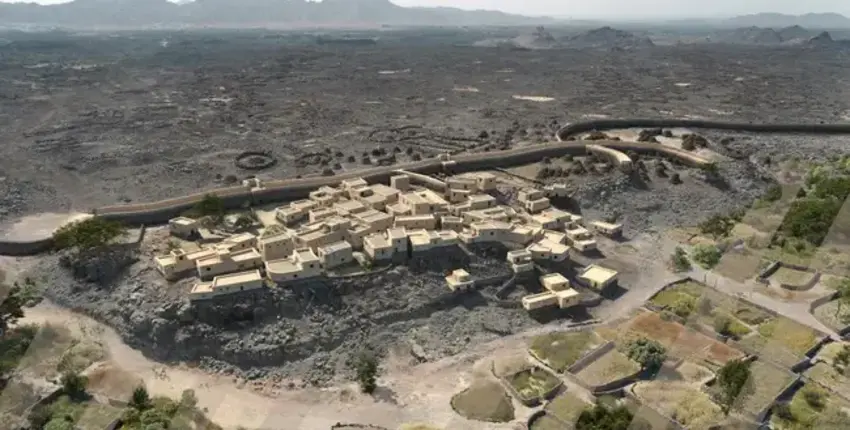A small 4,400-year-old city in Saudi Arabia’s Khyber Oasis shows that Bronze Age people in the region gradually urbanized, unlike their contemporaries in Egypt and Mesopotamia, according to a new study.
Archaeologists discovered this site near the city of Al-‘Ula in the Hejaz region of western Saudi Arabia and named it “al-Natah”. The settlement covered an area of approximately 3.7 acres (1.5 hectares), “including a central area and an adjacent residential area surrounded by protective walls,” researchers said in a statement. But the city occupied around 2400 BCE was small, with a population of only 500 people, the team said in a study published Wednesday (October 30) in the journal PLOS One.
In addition to a large number of pottery and grinding stones, the remains of at least 50 dwellings, estimated to be made of clay material, were also found in the settlement area. There were two buildings in the central area that may have been used as administrative areas, the team wrote in the paper. A necropolis was discovered in the western part of the central square. There are large and long circular tombs that archaeologists call “stepped tower tombs”.
No writing samples have yet been found at the site, the study’s lead author Guillaume Charloux, an archaeologist at the French National Center for Scientific Research (CNRS), told Live Science in an email. Researchers found only a few traces of grain, Charloux said, but based on findings at other sites, it’s likely the El Natah people grew grain near the site.
The city and its surroundings were surrounded by a 9-mile (14.5-kilometer) wall that would have protected against raids by nomads, the team wrote in an earlier paper published in the Journal of Archaeological Science.
The city was abandoned between 1500 and 1300 BC, but researchers are not sure why. “This is an important question that I cannot answer at this time,” Charloux said, adding that “we have very few clues about the final stage of the occupation.”
slow urbanization
During the period when the city was settled, cities developed in Mesopotamia, Egypt and the Eastern Mediterranean. Studies in Al-Natah and other regions show that urbanization in the Arabian Peninsula is progressing more slowly.
“Settlements in Northern Arabia were in a transitional phase of urbanization during the third and second millennia. [до нашої ери]”, the researchers said in a statement. They called this phase “low urbanization” and described it as a transitional phase between pastoralism, where nomadic people used pastures for livestock, and complex urban settlements.
“Although urbanization began in Mesopotamia and Egypt in the 4th millennium B.C., our study tends to show that social complexity increased late in northwestern Arabia,” Charloux said, noting that urbanization on the peninsula did not begin until the second half of B.C. 3rd millennium BC when some groups in the Arabian Peninsula adopted a sedentary lifestyle and began to use agriculture on a larger scale. People in Egypt and Mesopotamia led a sedentary lifestyle.
Compared to the large Bronze Age cities of Mesopotamia and Egypt, settlements in Saudi Arabia tended to be smaller. “These were small cities connected by a network of monumental fortifications surrounding large local oases,” Charloux said.
Juan Manuel Tebes, director of the Center for Research on the Ancient History of the Near East at the Catholic University of Argentina, praised the research.
“The archaeological project in Khybar is a major study that follows and expands the findings of excavations and research conducted in northwestern Saudi Arabia over the past 20 years,” said Thebes, who was not involved in the study. Live Science in Email.
He noted that other projects in the region, such as the Saudi-German expedition in the city of Taima and the Saudi-Austrian expedition in Qurayya, also provided valuable information about the archeology of the region. For example, excavations at Taima have revealed thousands of years of settlement and include ruins dating back to the time when a Babylonian king named Nabonidus (reigned 556-539 BC) lived in the area.
Qatar Museums senior researcher Robert Andrew Carter, archeology and field development specialist, who was not involved in the research, also praised the team’s work. “We have only a fragmentary understanding of the Bronze Age and the origins of urbanism.” [районі Хеджез на заході Саудівської Аравії]“This research goes a long way in providing primary data and advancing our theoretical understanding,” Carter said.
Source: Port Altele
